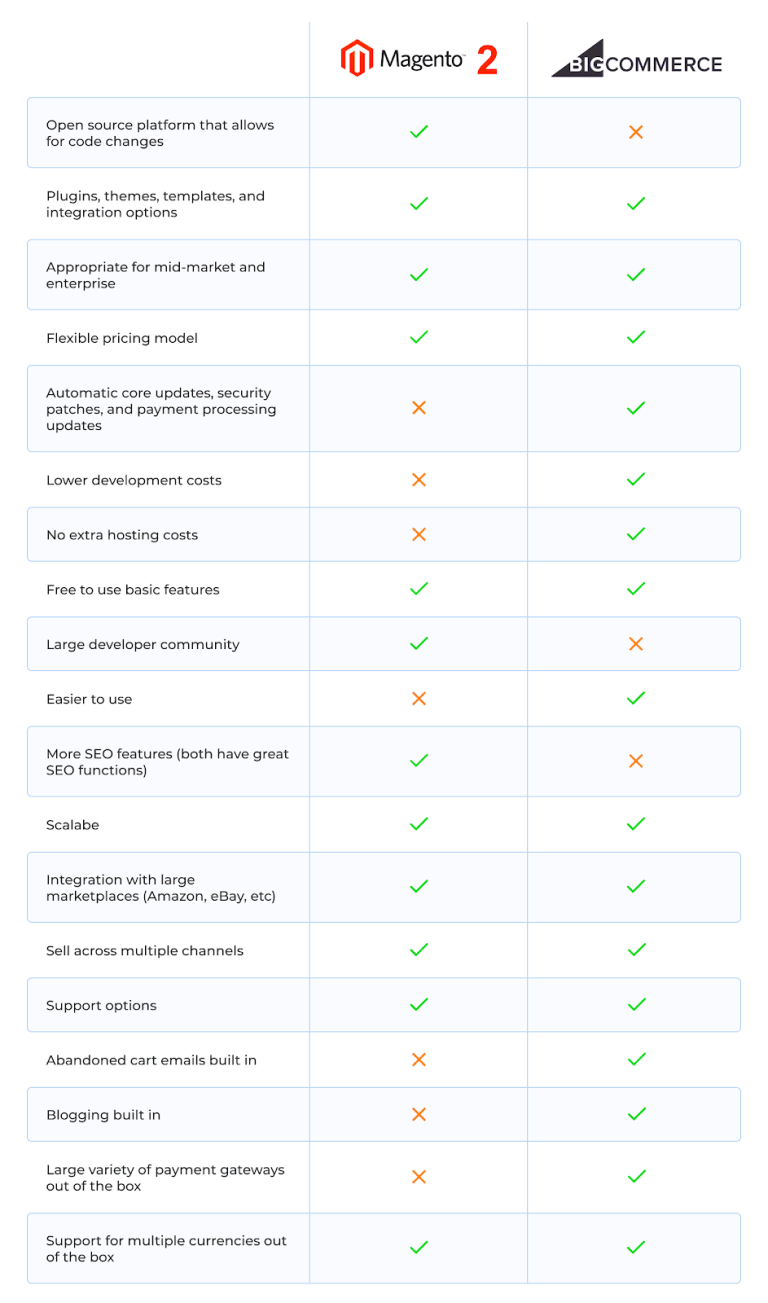

When it comes to running an eCommerce business, there are two types of website software platforms you can choose to power your shop with: open source or software as a service (or SaaS). Their main differences have to do with capabilities and cost. Neither is objectively better; which platform works best for you will depend on your business needs and your budget.
eCommerce retail sales topped 4.13 trillion USD in 2020, and they’re set to keep climbing, according to Statista. As online shopping continues to grow, more and more businesses are seeking information on these two platform types, specifically what benefits they each offer and what makes them different from one another.
What Is Open Source?
Open source is a type of software platform that is powerful and deeply customizable because its source code can be overridden, or edited. You buy it (some instances are even free to use), install it, and host it on a server, either on the same premises as your business is located, or from a hosting company or leased in the cloud from a firm providing that service. Like anything, you get what you pay for: free versions are sometimes stripped down to the basics and don’t include all the features that you may need to run your business.
The big differentiator with open source is that you manage everything yourself—or pay a third-party provider to. As they say, with great power comes great responsibility. So unless you have developers/programmers on staff, you’ll likely need support from a development agency with building and maintaining your open source eCommerce website.
What Open Source Platforms Are There?
Magento is one of the main open source platforms, and it’s available in three versions: Magento Open Source (formerly Magento Community Edition), which is free to download; Magento Commerce (formerly Magento Enterprise Edition), which requires you to pay licensing fees in exchange for advanced features and ticket-based support; and Magento Commerce Cloud, which is the paid version with cloud-hosting included in the license fee. Other open source platforms include WooCommerce, OpenCart, PrestaShop and Shopware.
The Pros of Open Source
Flexibility Through Complete Customization
Open source platforms are highly customizable, which means they offer a large degree of control regarding the shopping experience. This is because powerful features can be built by overriding source code, making them great for businesses with very specific, niche needs. For example, with many fashion eCommerce businesses wanting to provide advanced technologies like virtual fitting rooms, this makes open source platforms an enticing option. The only limit is your developers’ abilities, your imagination and, of course, your wallet.
Unlimited Selling Potential
There is virtually no limit to how much or what you can sell with an eCommerce site built on an open source platform. You can start at any size and keep growing. This is great for auto aftermarket websites in particular, as they tend to run their product numbers into the hundreds of thousands.
Community Support
Open source platforms are built and monitored collaboratively, by developer communities, with programmers sharing ideas freely online in blogs and forums. These supportive environments can be great for fostering creativity, solving problems and generally building amazing websites. However, the level of this collaborative access can be determined by whether or not you pay a licensing fee for your version of the platform.
The Cons of Open Source
Complexities Can Keep People Out
Generally, open source platforms are created for and by software developers and programmers, meaning that not only the initial setup and creation of the site, but also any ongoing maintenance and functional improvements requires a developer, in-house IT department, or outside agency. There is a lot of technical knowledge that’s required to begin with, and that must be kept up with, as platforms and best practices evolve. It can be difficult or at least time-consuming, and costly for a typical merchant to manage these capabilities by themselves
Higher Cost to Build and Maintain
The initial cost to build with open source also doesn’t include other software extensions and customizations you may need for the site to function exactly as you would like it to. The more overrides you make to the source code, the more complex and therefore often more expensive it can be to maintain. Plugins can often be incompatible with each other as they are built by different developers, and when they become outdated and unsupported they need to be replaced, which requires identifying, purchasing and installing new ones. This can mean you need to keep building new tools for promotions, merchandising and so on. Hosting provider fees can also fluctuate with usage and traffic spikes.
Security and Maintenance is in Your Hands
Open source platforms can be vulnerable to hackers. The software provider (ie. Magento) will probably provide patches. But the onus is on you the merchant (or any third party you hire) to install these patches, plus install any upgrades, fix bugs, and meet PCI Compliance (Payment Card Industry Data Security) standards, to be able to accept payments.
Interested in Learning More?
InteractOne has a team of highly skilled developers that are very experienced in building and maintaining open source platforms for a range of different types of online businesses. If you’re interested in learning more, reach out to us to discuss whether an open source platform could be right for your business.
Get in Touch
Connect with one of our experts today to discuss your eCommerce needs!
Contact Us








